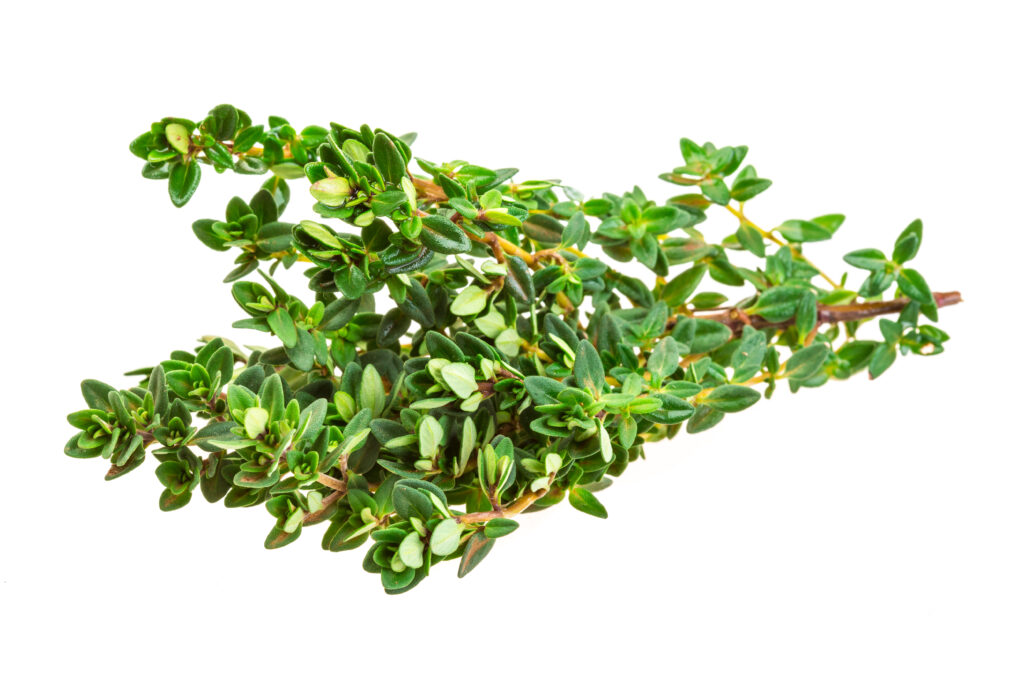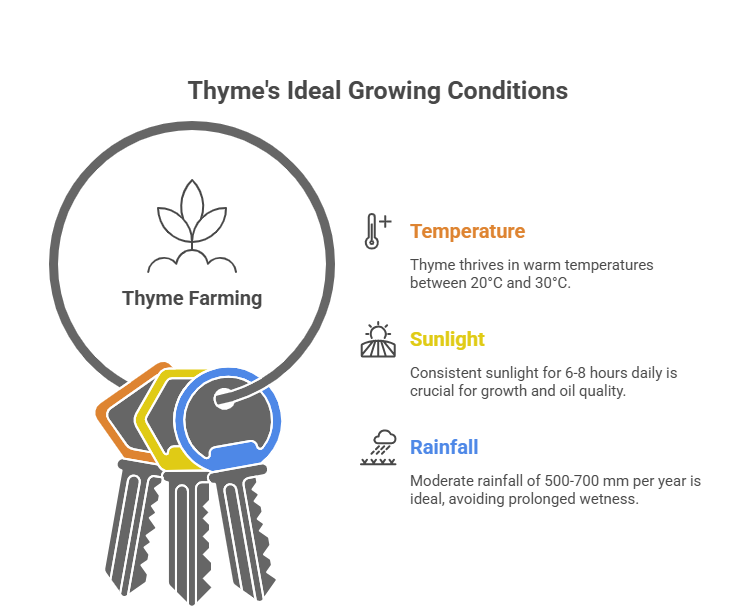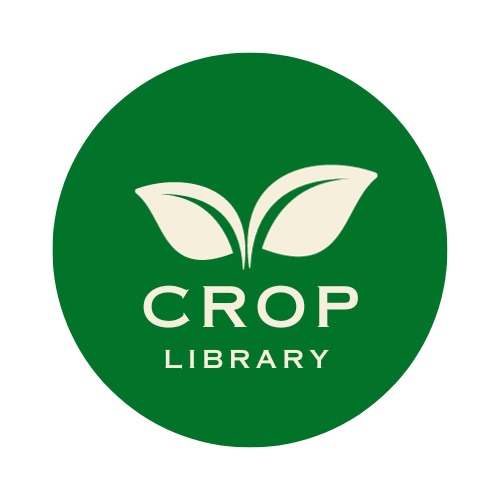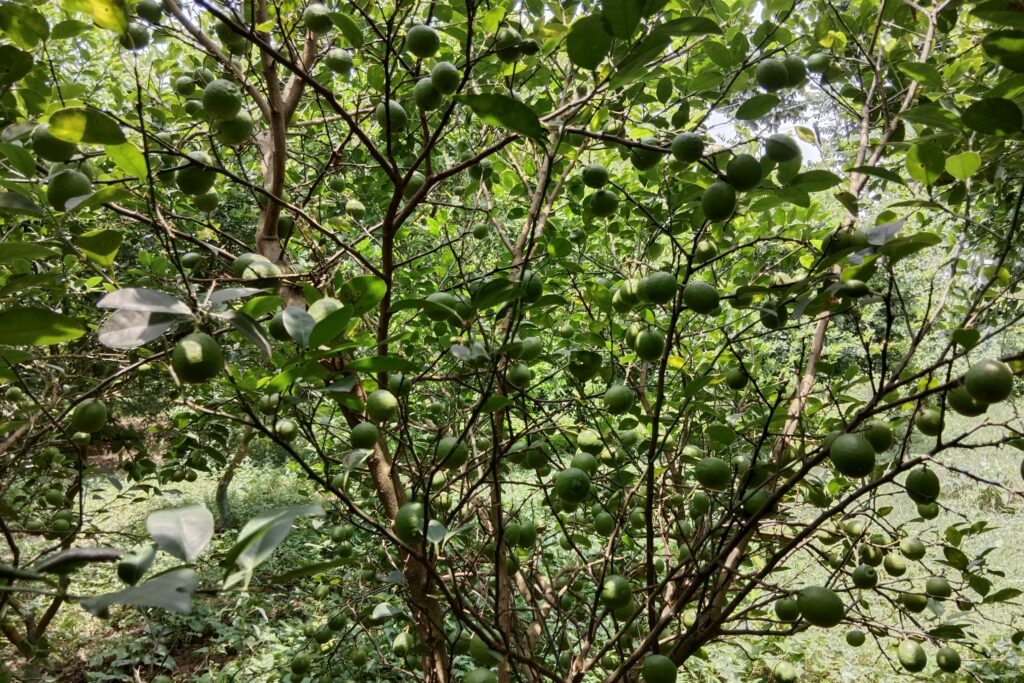Thyme Farming
Thyme (Thymus vulgaris L.), a perennial evergreen from the mint family (Lamiaceae), is grown for its leaves and flowering tops. These are used both as a culinary herb and to extract thymol, an essential oil for the pharmaceutical, cosmetic, and food industries. To cultivate it successfully, one must consider its Mediterranean background.

Thyme farming profit per acre demonstrates a highly lucrative opportunity for farmers seeking sustainable and high-value crops. With a moderate initial investment of around NRs. 48,000 per acre, thyme cultivation stands out as an affordable yet rewarding venture compared to many other medicinal and aromatic herbs.
Under proper management, farmers can achieve an estimated yield of about 2,000 kg per acre, resulting in a remarkable net profit of NRs. 152,000. This translates to an impressive profit margin of nearly 76%, reflecting a strong return on investment. Moreover, the Benefit-Cost ratio of 4.16:1 indicates that for every NRs. 1 invested, the farmer can expect to earn NRs. 4.16 in return—solidifying thyme farming as a profitable and economically viable agricultural enterprise.

Land Preparation
Thyme grows best in soil that has been thoroughly loosened and leveled. Start by plowing the field to a depth of around 20–25 cm to improve aeration and root penetration. Afterward, carry out two or three passes of harrowing or rototilling to crumble large soil clods and achieve a smooth, even surface. In regions that experience heavy rainfall or have slow-draining soils, it is advisable to form raised beds or ridges. This practice helps prevent excess moisture from accumulating around the roots, which are particularly prone to waterlogging.
Soil Type
This herb prefers light, well-drained soils such as loam or sandy loam. A pH range between 6.0 and 8.0—slightly on the alkaline side—is most suitable. Good drainage is essential because thyme roots are sensitive to standing water, which can cause rot. If the soil is heavy or clayey, mix in sand and organic material to enhance drainage and texture. Thyme’s hardy nature also allows it to adapt to moderately fertile or rocky soils, making it a resilient choice for diverse growing environments.
Climatic Requirements
Originating from Mediterranean regions, thyme flourishes in warm, sunny, and moderately dry conditions. The ideal temperature range for its growth is between 20°C and 30°C. Once mature, the plant can tolerate mild frosts, though severe cold may harm its foliage and stems.
Consistent sunlight—at least six to eight hours daily—is necessary for vigorous growth and for maximizing the aroma and quality of its essential oils. The herb performs best in areas receiving moderate rainfall of about 500–700 mm per year; prolonged wet or humid conditions should be avoided to reduce the risk of fungal infections.

Major Cultivars
There are many species and varieties of thyme, but the most commonly cultivated is Thymus vulgaris (Common Thyme or Garden Thyme).
| Cultivar Name | Key Characteristics & Uses |
| Common Thyme (Thymus vulgaris) | The standard variety for culinary and medicinal purposes. |
| Lemon Thyme (Thymus x citriodorus) | Known for its distinct lemon aroma and flavor. |
| Creeping Thyme (Thymus serpyllum) | Primarily used as an ornamental ground cover. |
| Caraway Thyme (Thymus herba-barona) | Recognizable by its caraway-like scent. |
| Commercial Varieties (e.g., ‘German Winter’, ‘French Summer’) | Selected for high oil content, specific growth habits, and disease resistance. |
Propagation
Thyme can be propagated through three main methods: seeds, cuttings, and division. The choice of method depends on the scale of cultivation and the desired uniformity of the plants.
a) Seeds
Propagation through seeds is the most common method for large-scale cultivation of thyme. However, the germination process is often slow and uneven, requiring patience and careful management. To achieve better results, seeds should be sown in well-prepared nursery beds or trays with light soil, kept moist but not waterlogged until seedlings appear.
b) Cuttings
Using cuttings is a reliable method for maintaining the genetic purity and desirable traits of the mother plant. Semi-hardwood cuttings, about 5–10 cm long, should be taken from healthy, disease-free plants. These cuttings root well when placed in a mixture of sand and soil under warm and slightly humid conditions. This method is particularly useful for commercial growers who need uniform crops with consistent aroma and oil quality.
c) Division
Division is a simple and effective technique, especially suitable for small-scale or home garden cultivation. Mature thyme clumps are carefully divided in early spring or autumn, ensuring that each section has both roots and shoots. This method allows quick establishment and ensures that the new plants retain the characteristics of the parent plant.
Seed Rate per Acre
When thyme is sown directly in the field, approximately 1.5 to 2.5 kilograms of seed per acre are required. Because the seeds are extremely small, they are often blended with fine sand or another carrier material to allow for uniform spreading. In contrast, when plants are first raised in a nursery and later transplanted, only 200 to 400 grams of seed are needed to produce enough seedlings for one acre of cultivation.
Nursery Management
Thyme seeds should be planted in well-prepared nursery beds or in seedling trays filled with a light, sterile growing medium. Due to their tiny size, the seeds should be scattered evenly on the surface and covered with only a thin layer of soil or compost. The nursery must be kept consistently moist, avoiding excess water that could lead to fungal issues.
Under favorable conditions—typically 20–25°C—the seeds germinate in about two to three weeks. After around six to eight weeks, when seedlings reach 10–15 cm in height and produce four to six true leaves, they are thinned and made ready for transplanting. Before being moved to the main field, seedlings should be hardened by gradually reducing watering and exposing them to outdoor sunlight and temperature changes. This step helps improve their adaptability and survival once transplanted.
Planting
a) Planting Season
Thyme is generally started from seed in a nursery during early spring, around April, allowing the young plants to develop sturdy roots before transplanting. The seedlings or rooted cuttings are then shifted to the main field in May, when temperatures and soil conditions are ideal for rapid growth and successful establishment.
b) Planting Direction
To achieve even sunlight distribution across the field, the rows are commonly aligned in a north–south orientation. This arrangement helps each plant receive balanced light exposure throughout the day.
c) Spacing
Recommended spacing is about 60–90 cm between rows and 30–45 cm between individual plants. Such spacing ensures proper airflow, reduces the risk of disease, and provides sufficient room for cultivation and mechanical weeding.

d) Planting Method
Transplanting should be done carefully by lifting the seedlings from the nursery, trimming the roots slightly if they are bound, and placing them into prepared pits. The soil around each plant should be pressed gently to eliminate air pockets, followed by a light irrigation to help the roots settle and establish.
f) Number of Plants per Acre
With a spacing of 60 × 30 cm, approximately 22,000 to 22,500 thyme plants can be accommodated per acre, depending on field layout and border spacing.
Irrigation
In the early stages after planting, thyme plants benefit from light and frequent watering to promote strong root development. Once the plants are well-established, irrigation should become less frequent but deeper, encouraging deeper root growth and improving drought tolerance. The soil should be allowed to dry slightly between watering cycles.
Drip irrigation is highly recommended, as it directs water efficiently to the root zone, minimizes moisture on the foliage—thereby reducing disease risk—and conserves water resources. Overwatering must be avoided, as it can lead to poor aeration, root rot, and stunted growth.
Fertilizer and Manure
Thyme does not require heavy fertilization; excessive nitrogen can cause lush vegetative growth at the expense of essential oil production. During land preparation, it is advisable to incorporate 10–15 tonnes of well-decomposed farmyard manure or compost per acre to enrich the soil organically.
For balanced nutrition, around 50:40:40 kg NPK per acre can be applied annually. This should ideally be divided into two applications—one at the time of planting and the other after the first harvest. Before applying any fertilizers, a soil test should be conducted to determine actual nutrient requirements and to prevent over- or under-fertilization.
Weed Control
Weed pressure tends to be greatest during the early growth period of thyme. Effective management can be achieved through a combination of cultural and mechanical methods. Organic mulching with materials such as straw, or using black plastic mulch, helps suppress weed growth and conserve soil moisture.
Regular shallow hoeing between rows is also useful for keeping weeds in check, though care must be taken not to disturb the crop’s shallow root system. While pre-emergent herbicides may be used sparingly, manual and cultural approaches are generally preferred—particularly in organic or environmentally sustainable production systems.
Interculture Operation
a) Pruning
Pruning is an essential maintenance activity that supports healthy and productive growth. In the early spring of the plant’s second year, thorough trimming should be carried out to cut back the older, woody sections and stimulate the emergence of fresh, vigorous shoots. After each main harvest, lighter pruning can be done to maintain uniform growth and prevent excessive branching.
b) Training
Regular pruning and training practices help the plants develop a dense, balanced form, keeping the inner portions well-aerated and free from hard, woody stems. These operations contribute to improved foliage development and enhanced oil production.
Flowering
Thyme generally begins to bloom between late spring and early summer. The essential oil levels in the foliage tend to reach their maximum just before or during the initial flowering phase, making this period the most suitable for harvesting when oil extraction is intended. If the primary goal is leaf production, flower buds can be removed to encourage vegetative growth. However, allowing a few plants to bloom benefits pollinators and enhances biodiversity in the cultivation area.
Pest and Disease Management
Although thyme is naturally resilient due to its aromatic compounds, certain pests and diseases can occasionally pose challenges.
Common Pests
a) Aphids and Spider Mites
These sap-sucking insects can cause leaf yellowing, curling, and reduced plant vigor, and in severe infestations may transmit diseases. Early identification is key to effective control.
Physical methods such as strong water sprays can dislodge them from foliage. When chemical treatment is necessary, use neem oil (2–3 ml per liter of water) or insecticidal soap (5–10 ml per liter of water). Repeat treatments every 7–10 days as required, preferably in the early morning or evening to prevent leaf burn.
b) Mealybugs
Mealybugs form white, cottony clusters on stems and leaves while feeding on plant sap, leading to yellowing and wilting. They also produce honeydew, which encourages sooty mold development.
Remove and destroy infested plant parts before applying neem oil (2–3 ml per liter of water) or insecticidal soap (5–10 ml per liter of water). Ensure full coverage and repeat every 7–10 days until control is achieved.
Common Diseases
a) Root Rot
This disease often arises in poorly drained or overwatered soils, leading to yellowing, wilting, and root decay. Preventive measures include ensuring good drainage, moderating irrigation, and maintaining aerated soil. If chemical intervention is required, apply a soil drench using Carbendazim (1 g per liter of water) or Thiophanate-methyl (2 g per liter of water), strictly following label directions.
b) Botrytis (Grey Mold)
Grey mold develops in humid environments, producing a fuzzy gray growth on affected leaves and flowers. Managing humidity, improving ventilation, and removing infected debris help prevent spread. Copper oxychloride (3 g per liter of water) or Mancozeb (2–3 g per liter of water) can be applied at 7–10 day intervals, particularly during damp weather.
c) Alternaria Leaf Spot
This fungal disease causes dark circular spots that may merge and result in leaf drop, especially in warm, humid conditions. Management involves pruning infected leaves, providing adequate plant spacing, and reducing prolonged leaf wetness. Spray Mancozeb (2–3 g per liter of water) or Chlorothalonil (2 g per liter of water) every 10–14 days for effective control.
Harvesting
The timing and method of harvesting depend on the intended use of the plant. For fresh leaves, a light harvest can be done once the plants are well-established, typically when they reach 15–20 cm in height. For drying or essential oil production, the first major harvest usually occurs in the first year, just as the plants begin to flower.
The optimal time for harvesting is on a sunny, dry morning after the dew has evaporated, as this is when the oil content is highest. Stems should be cut 5–10 cm above the ground using a sharp sickle or shears, taking care not to damage the crown to ensure healthy regrowth.
Yield
Yield varies significantly based on cultivar, age of plantation, climate, and management practices.
| Product Type | Annual Yield per Acre | Key Conversion / Notes |
| Fresh Herb | 2,000 to 4,000 kg | Based on a well-managed plantation, often from two harvests (“cuts”). |
| Dry Herb | 400 to 800 kg | Assumes a drying ratio of 4:1 or 5:1 (fresh weight to dry weight). |
| Essential Oil | 10 to 25 liters | Based on an oil content of 0.5% to 1.0% of the fresh herb weight. |
Cost of Production per acre for Thyme Farming
| S.N. | Categories | Cost (NRs.) |
| 1. | Land Preparation | 15,000 |
| 2. | Seed | 1,000 |
| 3. | Seed Sowing | 1,000 |
| 4. | Fertilizers and Manure | 10,000 |
| 5. | Irrigation | 7,000 |
| 6. | Weed Control (Pre & Post-emergence) | 2,000 |
| 7. | Pest & Disease Control | 2,000 |
| 8. | Harvesting | 5,000 |
| 9. | Miscellaneous Costs | 5,000 |
| Total Cost of Cultivation (per acre) | 48,000 |
Income per acre from Thyme Farming
| Particulars | Estimated Yield (Kg/acre) | Market Price (NRs. /Kg) | Total Income (NRs.) |
| Yield | 2,000 | 100 | 200,000 |
Analysis of Thyme farming profit per acre
| Description | Amount (NRs.) |
| Total Income | 200,000 |
| Total Cost of Cultivation | 48,000 |
| Net Profit | 152,000 |
| Profit Margin | ≈ 76% |
| Benefit: Cost Ratio (B:C) | 4.16: 1 |
Thyme farming presents a highly attractive economic opportunity, characterized by a moderate initial investment of NRs. 48,000 per acre, which is relatively low compared to many other medicinal or herb crops. This venture offers excellent profitability, with an estimated yield of 2,000 kg/acre and a market price of NRs. 100/kg, leading to a substantial net profit of NRs.152,000 per acre.
This indicates a strong return on investment, further evidenced by an impressive profit margin of approximately 76%, solidifying Thyme’s status as a high-value cash crop. The favorable economics are ultimately summarized by a Benefit-Cost ratio of 4.16:1, meaning for every NRs. 1 invested, a farmer can expect to earn NRs. 4.16 in return.
Crop Calander of Thyme farming (Thymus vulgaris L.)
This calendar outlines the key agricultural operations for a typical growing cycle of thyme, based on the provided data and assuming a climate with a distinct growing season. The timing is generalized and should be adjusted based on local weather conditions and the specific cultivation region.
| Month | Key Operations & Activities | Description / Key Points |
| March – April | Land Preparation & Nursery Sowing | · Deep plowing (20-25 cm) followed by 2-3 rounds of harrowing to achieve a fine tilth. · Prepare raised beds for drainage. · Incorporate 10-15 tonnes/acre of FYM/Compost and basal dose of fertilizers during final prep. · Sow seeds in nursery (April). Seeds are tiny; surface sow or cover lightly. Keep moist for germination in 14-21 days. |
| May | Transplanting | · Transplant 6–8-week-old seedlings (approx. 10-15 cm tall) from the nursery to the main field. · Spacing: 60 cm between rows x 30 cm between plants. · Orientation: North-South row direction. · Provide light irrigation immediately after transplanting to settle roots. |
| May – July | Establishment, Weed & Irrigation Management | · Frequent, light irrigation to help young plants establish. · Critical weed control period: Use mulching or shallow hoeing to manage weeds without damaging shallow roots. · Monitor for pests like aphids and spider mites; control with water sprays, neem oil, or insecticidal soap if needed. |
| July | Vegetative Growth & Maintenance | · Shift to deep, infrequent irrigation (Drip irrigation is ideal). Allow soil to dry between waterings. · Apply top-dressing/balanced fertilizer after first harvest. · Continue monitoring for pests and diseases like root rot (prevent with good drainage) and leaf spot. |
| August / September | First Harvest | · For drying/oil: Harvest just as flowering begins on a sunny, dry morning. · Cut stems 5-10 cm above the ground. · For fresh leaves, light harvest can be done once plants are bushy. |
| November / December | Post-Harvest Care & Pruning | · After the growing season, plants become dormant. · Prune back hard in early spring (of the second year) to remove woody growth and encourage new shoots. |
| Year 2 Onwards | Established Crop Cycle | · Early Spring: Hard pruning. · Spring-Summer: Vigorous growth; manage irrigation and weeds. · Late Spring/Early Summer: First major harvest (peak oil yield). · Late Summer/Autumn: Potential second harvest. · Annual Fertilization: Apply balanced NPK (e.g., 50:40:40 kg/acre) as per soil test. · This cycle continues for 4-5 years before the plantation needs renewal. |
Sources
Food and Agriculture Organization (FAO)
University of California Agriculture & Natural Resources (UC ANR)
European Plant Protection Organization (EPPO)
Punjab Agricultural University (PAU)
Tamil Nadu Agriculture University (TNAU) – Agritech portal
Indian Council of Agricultural Research (ICAR)
Nepal Agricultural Research Council (NARC)
U.S. Department of Agriculture (USDA).
Ministry of Agriculture and Livestock Development (Nepal)
Disclaimer: This crop farming profits assume optimal conditions. Actual results may vary depending on climate, market prices, and farm management practices.



Pingback: Perilla Farming Profit Per Acre -